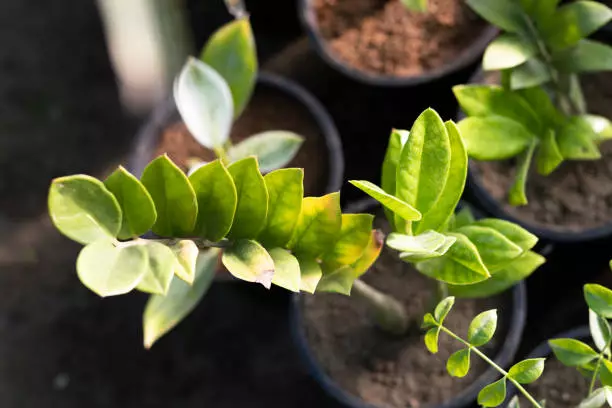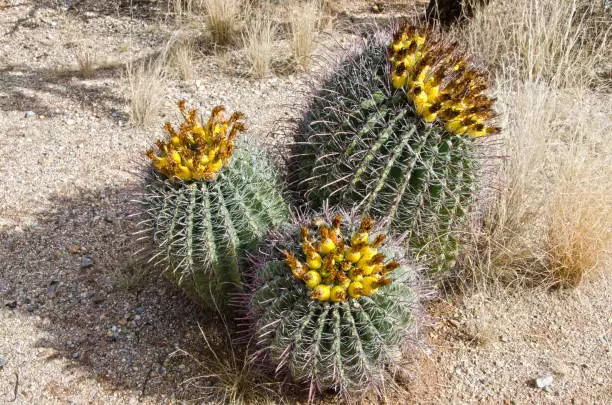Palm trees are a common sight in many tropical and subtropical regions of the world. They are known for their distinctive appearance and ability to thrive in hot and humid conditions. While palm trees are often admired for their beauty and usefulness, many people wonder if it is possible to burn their wood.
The answer to this question is not straightforward. While palm tree wood can be burned, there are some important considerations to keep in mind. For example, some species of palm trees produce wood that is harder and more dense than others, which can affect its burnability. Additionally, burning palm tree wood can produce a lot of smoke and ash, which may not be desirable in all situations.
In this article, we will explore the topic of burning palm tree wood in more detail. We will discuss the factors that can affect the burnability of palm tree wood, as well as the potential benefits and drawbacks of using it as a fuel source. By the end of this article, you will have a better understanding of whether or not it is possible to burn palm tree wood and what you need to know if you decide to try it for yourself.
Understanding Palm Trees
Palm trees are a unique type of woody tree that is commonly found in tropical regions. They are known for their long, slender trunks and large, fan-shaped leaves. There are over 2,500 species of palm trees, with some being endangered species, such as the rattan palm trees.
While palm trees are often associated with coconuts, not all palm trees produce this fruit. In fact, there are many different types of palm trees that produce a variety of fruits, including dates, acai berries, and oil palm fruit.
When it comes to burning palm tree wood, it is important to understand that not all species of palm trees are suitable for burning. Some species, such as the coconut palm, have a high moisture content and are not ideal for burning. Additionally, burning endangered species of palm trees is illegal and should be avoided.
In terms of the quality of palm tree wood as a fuel source, it is not as efficient as other types of wood, such as oak or maple. Palm tree wood burns quickly and produces a lot of smoke, which can be harmful to the environment. However, it can still be used as a source of fuel for cooking and heating in some regions.
Overall, while palm trees are a fascinating and important part of many tropical ecosystems, they are not the most efficient or sustainable source of firewood. It is important to consider alternative fuel sources and to avoid burning endangered species of palm trees.
Palm Tree Wood Characteristics
Density and Strength
Palm tree wood is generally known for its light density and lower strength compared to other types of wood. The density of palm tree wood varies depending on the species of palm tree, but it usually falls between 0.3 to 0.9 grams per cubic centimeter. This makes it a less preferred wood for construction purposes. However, some species like the Red Palm tree wood have higher density and strength making them suitable for furniture making.
Water Content
The water content of palm tree wood is relatively high due to its fibrous cellular structure. The water content can be as high as 50% in freshly cut palm tree wood. This high water content makes it unsuitable for burning as it can produce a lot of smoke and emit a lot of moisture.
Color and Appearance
Palm tree wood has a unique golden color with black-brown specks that make it attractive for decorative purposes. The bark of palm trees is thin and fibrous, and it is usually removed to expose the cambium tissue. The sapwood is light in color, while the secondary xylem has a darker color.
In conclusion, palm tree wood has unique characteristics that make it suitable for decorative purposes. However, its light density and high water content make it unsuitable for construction and burning.
Burning Palm Tree Wood
If you have palm trees on your property, you may be wondering if you can burn the wood. Palm tree wood is a popular fuel source in some regions, but is it safe to burn? In this section, we’ll explore the different aspects of burning palm tree wood.
Heat and Efficiency
Palm tree wood burns hot and fast, making it an efficient fuel source. However, it is not as efficient as other types of wood, such as firs. If you’re looking to heat your home or cook with palm tree wood, you may need to use more of it than you would with other types of wood.
Smoke and Ash Production
Burning palm tree wood produces a lot of smoke and ash. This can be a problem if you have respiratory issues or if you’re burning the wood in an enclosed space, such as a fireplace. The smoke can also be toxic, so it’s important to avoid inhaling it.
Safety Considerations
When burning palm tree wood, it’s important to take safety precautions. The wood is highly flammable, so it should be split and seasoned before burning. Avoid burning palm wood that is still green or wet, as it can produce excessive smoke and ash. It’s also important to have a well-ventilated area when burning palm tree wood, as the smoke can be toxic.
If you’re using palm tree wood in a fireplace or wood stove, make sure you have a chimney that is clean and in good condition. The buildup of creosote from burning palm tree wood can be a fire hazard. When burning palm tree wood in an outdoor fire pit, make sure the area is clear of grass and other flammable materials.
Conclusion
In conclusion, burning palm tree wood can be a viable fuel source, but it’s important to take safety precautions and be aware of the potential drawbacks, such as excessive smoke and ash production. If you’re considering burning palm tree wood, make sure it’s split and seasoned, and use it in a well-ventilated area.
Environmental Impact of Burning Palm Tree Wood
Burning palm tree wood can have a significant impact on the environment. While it is a common practice in some areas, it is important to understand the potential consequences before engaging in this activity.
One of the primary concerns is the release of pollutants into the air. Burning wood, including palm tree wood, can produce harmful chemicals such as carbon monoxide, nitrogen oxides, and particulate matter. These pollutants can contribute to air pollution, which can have negative impacts on human health and the environment.
Another consideration is the impact on water resources. Burning palm tree wood can release ash and other pollutants that can contaminate water sources. This can be particularly problematic in areas where water is scarce or where the water supply is already compromised.
The season in which the palm tree wood is burned can also have an impact on the environment. Burning during dry seasons can increase the risk of wildfires, which can have devastating effects on natural habitats and wildlife.
In addition to these concerns, burning palm tree wood can also have an impact on the timber industry. Palm trees are often harvested for their trunks, which can be used for a variety of purposes. Burning these trunks can reduce the availability of this valuable resource.
To mitigate the environmental impact of burning palm tree wood, it is important to follow best practices and guidelines. This may include burning only in designated areas, avoiding burning during dry seasons, and ensuring that the wood is properly seasoned and has a low water content.
Overall, while burning palm tree wood can be a convenient way to dispose of waste, it is important to consider the potential environmental consequences before engaging in this activity. By taking appropriate measures to minimize the impact, it is possible to reduce the negative effects on the environment and protect natural resources for future generations.
Uses of Palm Tree Wood
Palm tree wood is a versatile resource that has been used for centuries. It is a strong and durable wood that can be used for a variety of purposes. In this section, we will explore some of the common uses of palm tree wood.
Furniture and Building Materials
Palm tree wood is commonly used for furniture and building materials. It is a popular choice for outdoor furniture because of its resistance to weather and insects. The wood is also used for decking, flooring, and roofing. Palm tree wood is known for its strength, fibrous grain, and flexible tissue, which make it an ideal material for construction.
Non-Local Wood and Driftwood
Palm tree wood is often used as non-local wood. It is a popular choice for bridges and other structures because it is strong and accessible. Driftwood, which is wood that has been washed ashore by the ocean, is also commonly made from palm trees. It is often used for decorative purposes, such as in the creation of sculptures and other art pieces.
Drying Process and Weaving
Palm tree wood must be dried before it can be used for furniture and building materials. The drying process is important because it helps to prevent the wood from warping and cracking. Once the wood is dry, it can be used for weaving and other decorative purposes. Palm tree fronds are often used for weaving baskets, mats, and other items.
Local Wood and Reinforcement
Palm tree wood is a popular choice for local wood. It is a sustainable resource that is readily available in many parts of the world. The wood is often used for reinforcement in buildings and other structures. It is also used for rafters and other structural elements.
Manufactured Building Materials and Pressure-Treated Wood
Palm tree wood is also used in the manufacture of building materials. It can be processed into pressure-treated wood, which is used for outdoor structures such as fences and decks. The wood is also used for stores, which are small, open-air buildings commonly found in tropical regions.
Rattan Furniture and Wicker Furniture
Palm tree wood is often used for rattan furniture and wicker furniture. Rattan is a type of palm tree that has a flexible stem, which makes it ideal for weaving. Wicker furniture is made from a variety of materials, including palm tree fronds and stems.
Oil Production
Finally, palm tree wood is also used in oil production. The wood chips and other byproducts of palm tree wood can be burned to produce energy, which is then used to power oil production facilities.
In conclusion, palm tree wood is a versatile resource that has been used for centuries. It is a strong and durable wood that can be used for furniture, building materials, and a variety of other purposes. Whether you are looking for a sustainable resource for local construction or a durable material for outdoor furniture, palm tree wood is an excellent choice.
Conclusion
In conclusion, burning palm tree wood can be done, but it is not the most efficient or sustainable option. Palm tree wood is not a dense or long-lasting fuel source, and it produces a lot of smoke and ash when burned. Additionally, burning palm tree wood can contribute to deforestation and air pollution.
Instead of burning palm tree wood, there are several more sustainable and practical options for utilizing this resource. Palm tree wood can be repurposed into furniture, flooring, and other wood products. It can also be used as a biomass fuel source for energy production, such as through pyrolysis or gasification processes.
Overall, it is important to consider the environmental and economic impacts of burning palm tree wood. By exploring alternative uses for this resource, we can help to reduce waste and promote sustainable practices in the palm oil industry.
Frequently Asked Questions
Is it safe to burn palm tree wood?
Yes, it is safe to burn palm tree wood as long as it is dry and free from any contaminants such as pesticides or chemicals. However, burning wet or green palm tree wood can lead to excessive smoke and creosote buildup, which can be hazardous.
What are the risks of burning palm tree wood?
The main risks of burning palm tree wood are excessive smoke and creosote buildup. This can lead to poor air quality and an increased risk of chimney fires. Additionally, some palm trees may contain toxic compounds that can be released when burned, so it is important to ensure that the wood is free from any contaminants.
Can palm tree wood be used as firewood?
Yes, palm tree wood can be used as firewood, but it is important to ensure that it is dry and free from any contaminants. It is also important to note that palm tree wood burns quickly and produces a lot of heat, so it may not be the best choice for long-lasting fires.
What is the best way to burn palm tree wood?
The best way to burn palm tree wood is to ensure that it is dry and free from any contaminants. It is also important to use a well-ventilated area and to avoid burning green or wet wood. Additionally, it is recommended to use small pieces of wood to prevent excessive smoke and creosote buildup.
How does burning palm tree wood compare to other types of wood?
Burning palm tree wood produces a lot of heat and burns quickly, making it a good choice for quick fires or for adding extra heat to an existing fire. However, it may not be the best choice for long-lasting fires as it burns quickly and produces a lot of smoke.
What are the properties of palm tree wood that make it suitable or unsuitable for burning?
Palm tree wood has a high moisture content, which can make it difficult to burn. Additionally, it burns quickly and produces a lot of heat, which can be both an advantage and a disadvantage depending on the intended use. Overall, palm tree wood can be suitable for burning as long as it is dry and free from any contaminants.



